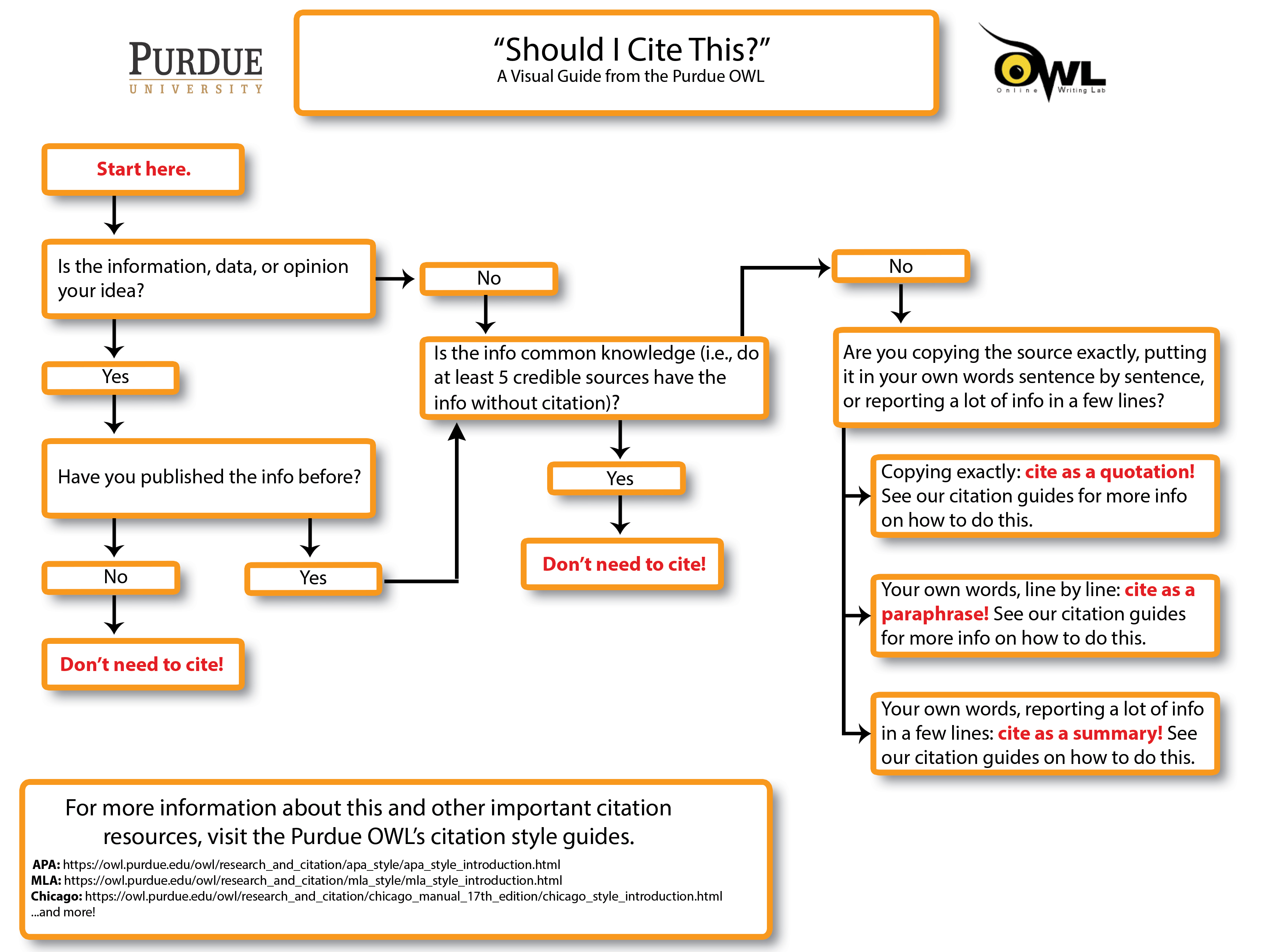How to Avoid Plagiarism
Plagiarism Overview
Purdue University OWL provides this poster overview of plagiarism.
Should I Cite This?
Purdue University OWL provides this poster to help decide if you need to cite information.
Tips to Avoid Plagiarism
The University of North Texas Libraries Plagiarism Guide provides these tips to avoid plagiarism:
- Be sure to give yourself time to conduct research as well as to write your paper. The more time you give yourself, the less rushed you will be and the fewer errors you will make.
- Provide a list of citations for all the resources that you used at the end of your paper.
- Provide "internal citations" (in-text citations) every time you use a resource within the body paragraphs of your paper.
- Properly quote resources when you use a resource word-for-word AND cite your source.
- Properly paraphrase resources by putting the content into your own words and syntax AND cite your source.
- Properly summarize the main points of a resource AND cite your source.
- Cite your sources, cite your sources, and cite your sources.
When to Cite
The Purdue University OWL Frequently Asked Questions about Plagiarism page notes:
You need to cite:
- Words or ideas presented in written medium, song, TV program, website, advertisement, or any other medium
- Copying exact words or phrases
- Reprinting diagrams, illustrations, pictures, or other visual materials
- Reusing or reposting any digital media, including images and videos
- Interviews
You do NOT need to cite:
- Your own artwork, photos, videos, etc.
- Your own results obtained through lab or field experiments.
- When using “common knowledge” things like folklore, common sense observations, myths, and urban legends.
- When using generally accepted facts (ex: ovens are hot).
When in doubt - cite!
Citing Properly
Citing information properly is the best way to avoid plagiarism. The Purdue University OWL provides tips to do this in their Quoting, Paraphrasing and Summarizing page:
Use quotations, paraphrases, and summaries to:
- Provide support for claims or add credibility to your writing
- Refer to work that leads up to the work you are now doing
- Give examples of several points of view on a subject
- Call attention to a position that you wish to agree or disagree with
- Highlight a particularly striking phrase, sentence, or passage by quoting the original
- Distance yourself from the original by quoting it in order to cue readers that the words are not your own
- Expand the breadth or depth of your writing
Quotations must be identical to the original, using a narrow segment of the source. They must match the source document word for word and must be attributed to the original author. Quotations should be used sparingly.
Paraphrasing involves putting a passage from source material into your own words. A paraphrase must also be attributed to the original source. Paraphrased material is usually shorter than the original passage, taking a somewhat broader segment of the source and condensing it slightly.
Learn more about paraphrasing, how to do it, and see examples here.
Summarizing involves putting the main idea(s) into your own words, including only the main point(s). Once again, it is necessary to attribute summarized ideas to the original source. Summaries are significantly shorter than the original and take a broad overview of the source material.



